The Holistic Setting Part 1: Environment, Areas & Sites
In this post, I will show you a way to create a setting that integrates recurring motifs throughout all its levels - from the broad landscapes down to specific sites and encounters.
Introduction
I promised that this post would be about fleshing out the locations we made in the previous post. I’ve spent a good amount of time thinking about how to approach this, but my initial idea quickly spiraled into something more involved. Well, to make a long story short, I reached the conclusion that a better approach to generate a world would be to repeat themes throughout the different levels of the setting – from the overarching landscape to the specific places, encounters, and quests. This, and probably the next few posts, are the result of this process – but no promises this time.
Advantages: It requires less, or at least a different kind of energy to make a setting, region and map this way that directly deciding every individual thing. You also end up with a thorough template from which to continue generating new places and encounters which fit thematically with the rest of your content.
Drawbacks: It requires a good portion of time to prepare the tables, and a somewhat clear understanding of what kind of world you want to play in.
Tools: Paper, preferably with hexagons, d6 and d10 dice, a notebook and a pencil.
The Concept
Motifs
Motifs are objects and symbols repeated throught a story. They have different meanings, and their repetition reinforces that meaning. Using them in your setting is a good way to create interconnected threads, imply general themes of your campaign, and tell your players something about the setting. In other words, Motifs can serve as the cohesive glue between the levels of your region, that makes the world at large seem familiar to your players once they start becoming aware of them.
However, we will turn them slightly on their head. Instead of deciding on their meaning immediately, think about what kind of game you want to play. What feelings and expectations arise? If your are inspired by a TV show or videogame, you could draw inspiration from the objects that you think evoke the atmosphere of those media.
Try to narrow them down and translate them into 10 concrete things, like animals, objects, food, plants, structures, phenomena etc. You don’t have to be able to explain how they are connected - you just have to feel they are.
It is fine to already have ideas of their significance at this point, but if you don’t, do not worry - it will emerge as we generate the world and its inhabitants, and through play.
Here is my list of motifs for this example - I wanted something whimsy, fairy-tale like, but also serious and potentially dark.
These table will often be randomly rolled on in order to create cohesive themes between areas, sites, NPCs and quests.
Environments
For the Environment table, think about what kind of climate you want your adventures to take place in. Picutere the landscape. For me, I am inspired by boreal, european like nature.
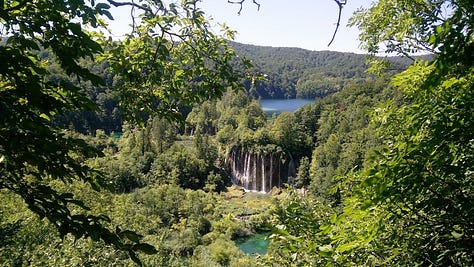
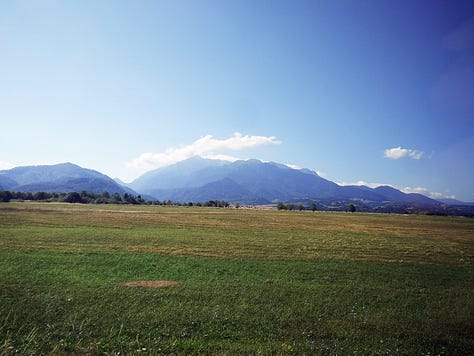
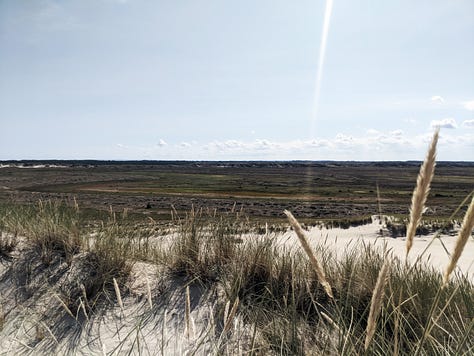

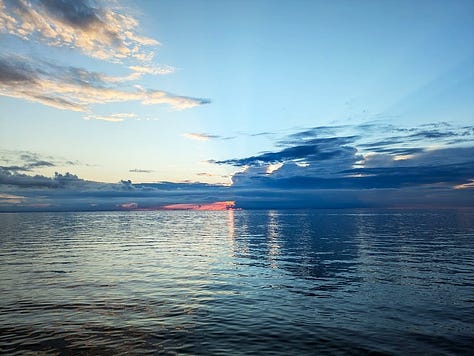
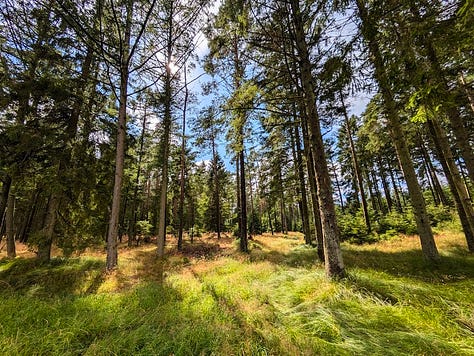
I chose the following six environments. The ocean, because I want the setting to center around a colony port town. Heath is a type of low-nutritous shrubland, wheres grasslands are a more generic version. Woodland is typically forests where the canopies do not touch, and as such are lighter and more spacious, whereas forests are typically darker with closed canopies. Mountains are just great.
Areas & Sites
Whereas Environments are generic landscapes of similar nature, Areas are instances of those environs which stick out for different reasons such as distinct flora, fauna, geological phenomena, or structures.
Areas and Sites are defined by one or more Aspects. I have grouped these into Biological , Geological, Archeological and Architectural types. As you can see, Areas are more likely to be defined by the first two, and Sites by the latter two.
Biological aspects denotes characteristic plants and animals.
Flora means plants and Fauna means animals
Abundant indicates a significant abundance of a species whereas Rare indicates that the species is probably only found in that area or site.
Unique indicates the presence of a singular extraordinary speciment, whereas Barren indicates little or no life at all.
Geological aspects indicate non-natural features.
These hopefully explain themselves. Shifting can indicate that the geological environment is unstable. Go wild and weird with Strange.
Archeological aspects are ancient structures, centuries or millenia old, and are almost always ruins.
Each entry indicates the original nature and use of the structure.
Architectural aspects are newer structures currently used or recently abandoned, decades old or newer.
Operational denotes a resource extraction, like quarries or logging camps.
Sites are the singular locations on the map, such a house, an interesting tree, a noteworthy pond, an important bridge etc. Sites use the same Aspects as Areas, so when rolling aspects for a Site, think about how the aspect can be construed as a singular and interesting thing instead of overall characteristic of the landscape.
Furthermore, each Site has Atmosphere and Content which will serve as a lense thorugh which to view its Aspects and context.
The Process
Choose your Motifs and Design your Tables (or use mine).
Generate Environments: Roll a number of d6 on your paper. Consult the Environment Table, loosly sketch the landscape according the the dice’s positions.
The more dice you roll, the more varied and mosaicial the region will be.
Generate Areas: Roll a number of d6 on the paper, note their location and result. Connsult the Area Size table. Outline a number of connected hexes at the loaction of the dice equal to their result on the table.
The more dice you roll, the less generic Environments you will have. Generic areas can be a good thing to have.
Describe Areas: Roll once on the Motif Table for each Area to give them a Motif. Roll one or two Aspects for each Area as well and note them down. Write a single sentence describing the overall Area using the Aspects.
You can also incorporate the Motif in the description if it inspires you.
Generate Sites: Roll a number of d6 on the map and note their location and result. The result shows each Sites’ Aspect. Roll another if you feel like it. Roll a Motif for each Site, as well as for Atmosphere and Content. Write everything down.
Describe Sites: Use the context and Motif of the Area wherein the Site is located, together with its own Motif, Aspects, Atmosphere and Content to flesh it out.
If the Site is located outside an Area in a plain Environment, use this as an opportunity to make a more simpel Site, using what you got. Not every site needs to be complex and intricate.
Examples
Area: Blue Flowers
Environment: Heath
Motif: The Moon
Aspects: Rare Flora + Hilly
Description: Among rolling hills of purple heather, dots of small, beautiful, flourescent blue flowers light up at night like stars in the sky.
Site: The Abandoned Observatory
Area: Blue Flowers
Aspect: Abundant Fauna + Scientific Architecture
Motif: Crabs
Atmosphere: Desolate
Content: Useful
Description: A small path winds up to a large hill through a sea of heather, pebbered with dots of blue . On top of the hill stands a lonely, abondoned observatory. A large, brass telescope protrudes from its roof, pointed at the moon. The only sound is the wind brushing against the dry vegetation and the creaking wood of the tower.
No living being is inside the tower, nor outside, except an unusually large infestation of small, grey landcrabs who have claimed the observatory as their home. No one knows what happened to the scholars once living here, but they probably left behind useful, albeit esoteric instruments and materials.
The telescope might still work, too.
If you want to see an example of how to draw the map itself using this method, take a look at my previous post.
Outroduction
See how the area can serve as a backdrop for individual Sites, and when the overall Motif is tied into each Site, a theme begins to emerge. Players, when exploring this Area, will quickly figure out that The Moon is of particular importance here. For what reason is up to you, and you might decide beforehand or let it emerge as you play - or let it be a mystery.
In the next post, I will show you how to generate characters and quests - and how tie them to the region by using the same list of Motifs!






